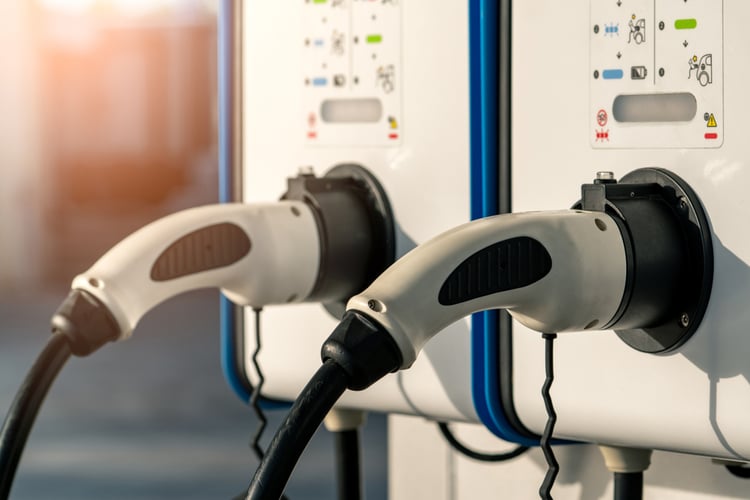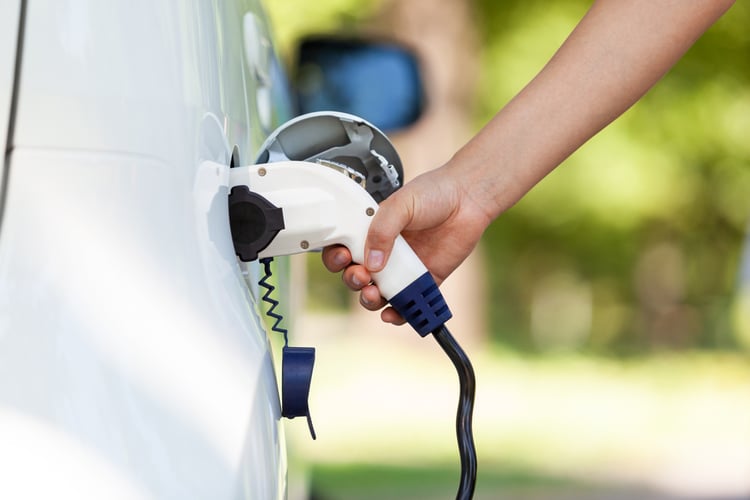Converting Gas Stations into EV Charging Stations: A Promising Concept

Electric vehicles can help reduce the emissions of the transportation sector, but this requires planning and ample infrastructure. Unlike fuel pumps, which can fill up diesel and gasoline cars in minutes, most EV chargers (Level 1 and 2) need several hours to fully charge a car battery. This is still a limitation for EV owners, who would benefit from having DC fast chargers widely available.
Converting gas stations into EV charging stations is a promising concept, which was recently demonstrated by Shell in Fulham, London. The company upgraded a gas station with nine EV chargers, rated at 175 kW each, capable of recharging EVs to 80% capacity within 10 minutes. The charging station includes a convenience store, where EV owners can wait or buy groceries while their cars recharge.
Considering EV chargers for your building project? Get your EVSE designs now
EV chargers can now be found in many types of commercial buildings, including shopping malls and department stores. However, dedicated charging stations that offer the convenience and speed of a gas station are still rare.
Designing an EV Charging Station

At a glance, fast charging stations for EVs may seem similar to conventional gas stations. However, each type of service station requires a different layout to operate effectively. Unlike fuel pumps, which require cars to be parked in parallel, EV chargers can use the same layout as parking spots.
- For a given land area, the number of EV fast chargers you can fit will be higher than the number of fuel pumps.
- Having more EV chargers leads to shorter wait times, and saved space is especially valuable in places like New York City.
Just like fuel pumps, EV charging stations can be combined with convenience stores, drugstores, fast food restaurants, coffee shops, etc. EV chargers are becoming common in commercial buildings like shopping malls and department stores, but they don’t offer the convenience and speed of having a small store next to a fuel pump.
EV charging areas can also be used to install canopies with solar panels, making the available space even more productive. DC fast chargers have a high power consumption, typically over 50 kW per unit, which means you need hundreds of solar panels even for a small number of them. However, solar panels can help you offset the consumption of smaller loads in the charging station, such as the light fixtures used around DC chargers and inside the convenience store.
How EV Charging Infrastructure Can Benefit Cities

The main benefit of widespread access to fast charging is being able to use more electric vehicles. This removes direct emissions from the road, which is an advantage even if the grid still depends on fossil fuels.
- Traditional cars release emissions right in the middle of cities, where the population is exposed to them. The US EPA has linked these emissions with many health issues, including heart and lung disease.
- An EV that gets charged with fossil fuel electricity still produces emissions indirectly. However, they are shifted to power plants and away from urban areas, mitigating their health impact.
Of course, the outlook is even better when EVs are charged with renewable sources like solar and wind power. In this case, both direct and indirect emissions are eliminated. EVs can also take advantage of distributed generation in homes and businesses, reducing their burden on transmission lines. Actually, EV chargers can achieve synergy with solar panels and wind turbines, which have a variable power output. When there is surplus production from renewable sources, it can be used to charge EVs at reduced cost.
Global EV sales grew by 80% in 2021, according to Utility Dive, and this is driving demand for lithium batteries and fast charging. As the number of EVs in circulation grows, the business case for converting more gas stations into fast charging areas will improve. Currently, most of the EV charging infrastructure in the US is concentrated in coastal cities and highways. DC fast chargers can already be found in several gas stations, but EV-only stations like the one recently opened by Shell in the UK are still rare.

Michael Tobias
Michael Tobias, the Founding Principal of NY Engineers, currently leads a team of 150+ MEP/FP engineers and has led over 4,000 projects in the US
Join 15,000+ Fellow Architects and Contractors
Get expert engineering tips straight to your inbox. Subscribe to the NY Engineers Blog below.
